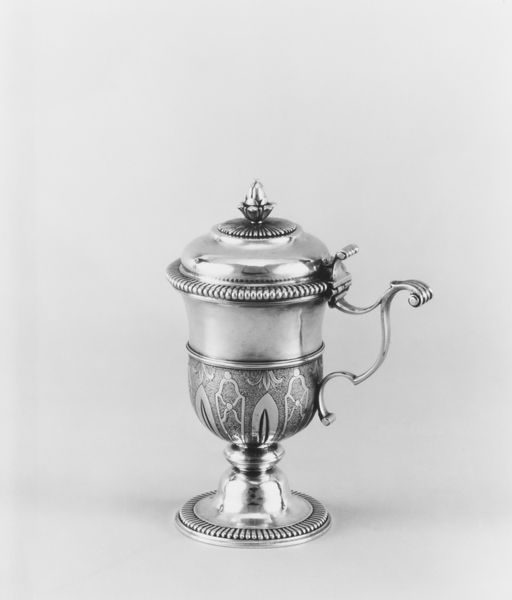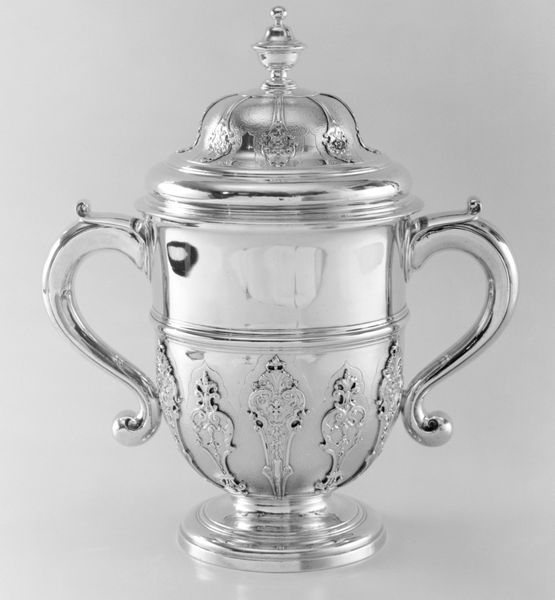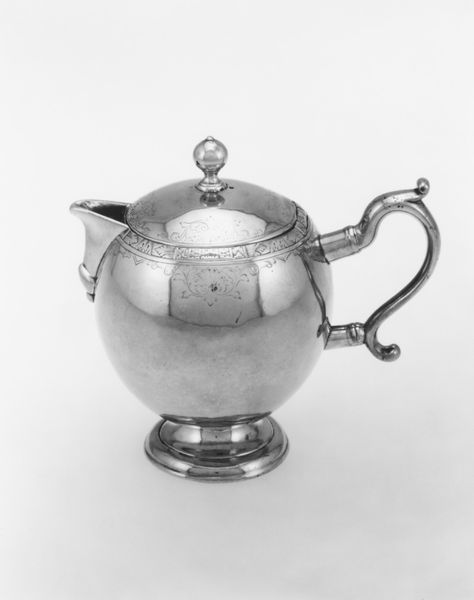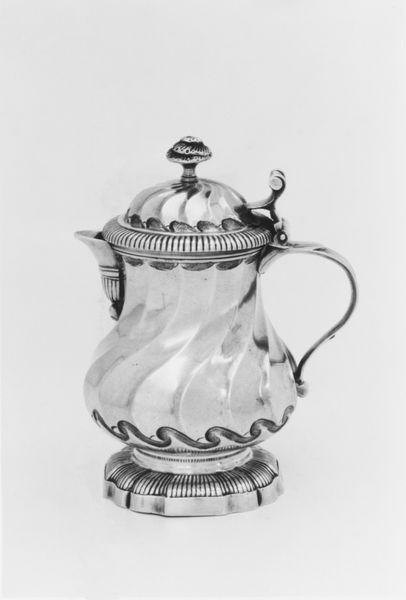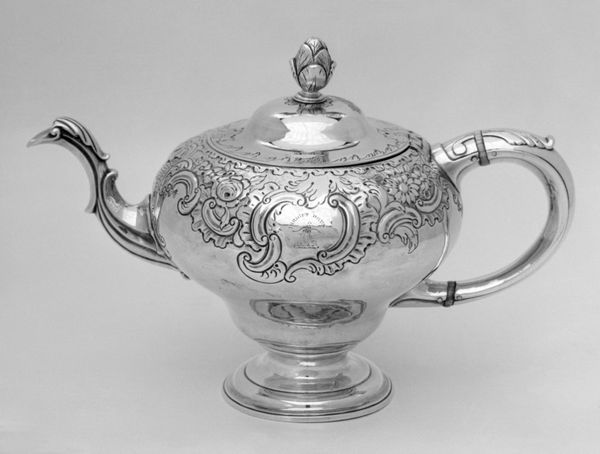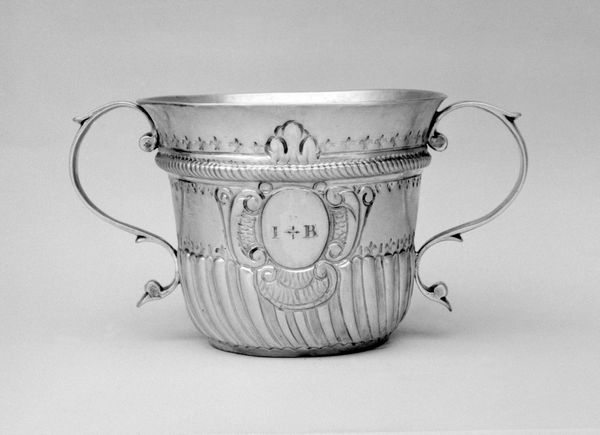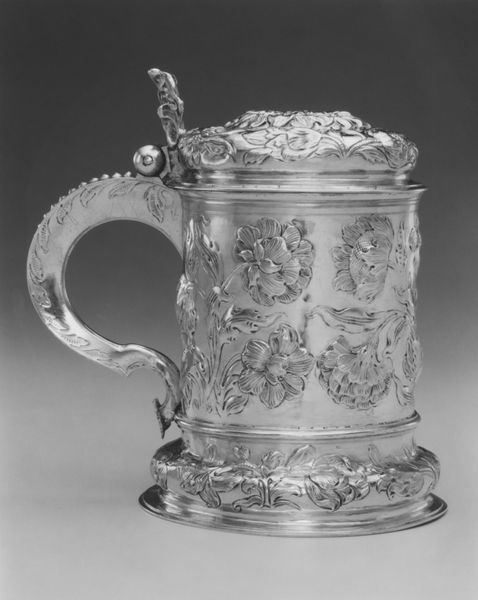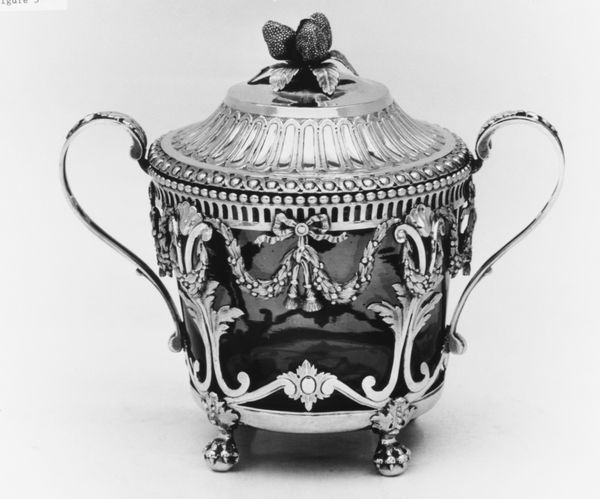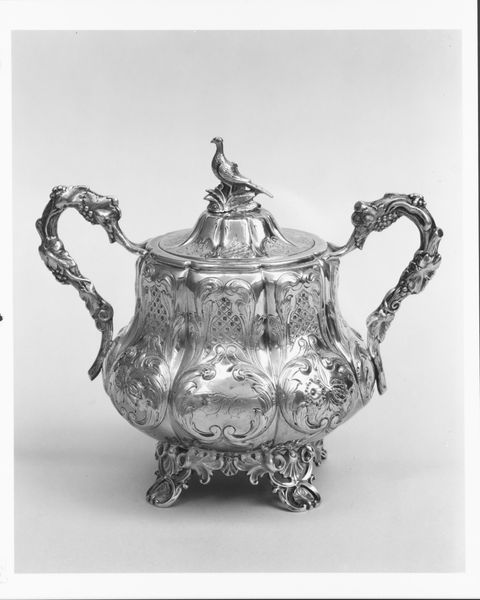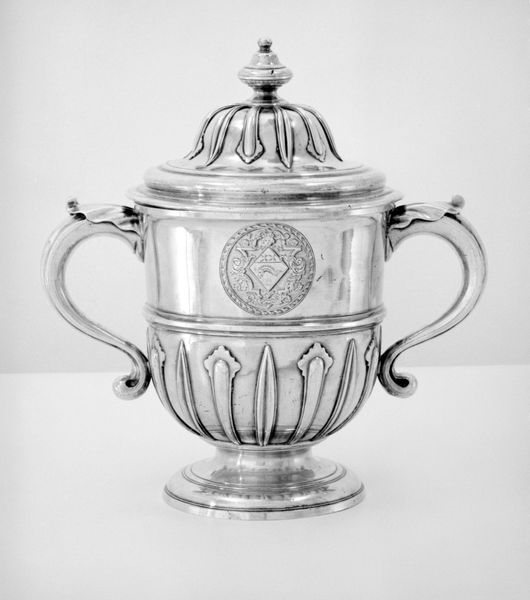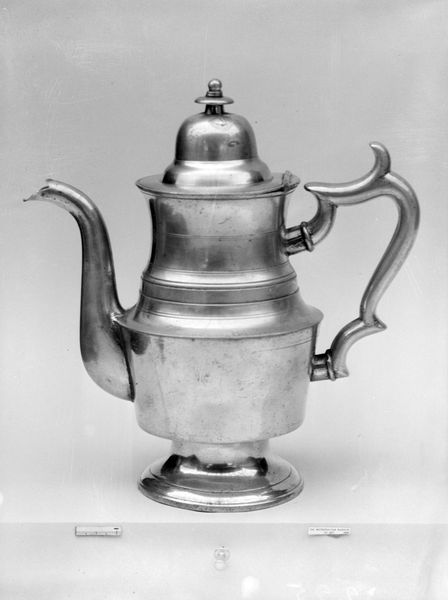
silver, metal, metalwork-silver, sculpture
#
silver
#
baroque
#
metal
#
metalwork-silver
#
stoneware
#
sculpture
#
decorative-art
Dimensions: Height: 11 5/8 in. (29.5 cm)
Copyright: Public Domain
Curator: At the Metropolitan Museum, we have an intriguing object from the early 18th century: a two-handled cup with cover, dating from 1701 to 1702. The artist remains unknown, but it's crafted from silver and exemplifies Baroque decorative arts. Editor: My immediate impression is one of understated grandeur. The silver gleams, but the form is remarkably simple, lending an air of cool authority. It’s a piece that whispers of status rather than shouts it. Curator: Indeed, its refined design reflects the social function of silver in that era. Objects like this were often displayed to indicate wealth and taste, symbols of power in a burgeoning merchant class. The Baroque style, despite its association with exuberance, found a quieter expression in these domestic settings. Editor: I’m curious about the crest. Its placement feels almost… reserved, like a subtle claiming of ownership and lineage in an era increasingly concerned with heritage and ancestry. The symbolism must have carried significant weight. Curator: Absolutely. Heraldry provided a visual shorthand for complex family histories and social positions. To decode it would give you an insight into the cup’s original owner. Also note the handles, rising almost defensively like guardian arms framing the container of something of substance. It speaks to both access and protection, two significant things in that time. Editor: The material itself—silver—was imbued with meaning. Its reflective surface perhaps intended to mirror the status of its owner, casting their image in a precious metal. Is there any religious association? Curator: While silver certainly carried religious connotations in church contexts, its presence here speaks more to secular power and domestic ritual. Think of toasts, celebrations, displays of hospitality – rituals centered on these vessels that helped build and reinforce social bonds. Editor: Looking at it now, I realize I’d initially overlooked this object’s importance. It serves as an eloquent emblem of status and authority in a fascinating historical period. Curator: Precisely, and like any artifact, it bridges the distance, allowing us to observe social nuances that would remain unseen were it only possible to read old texts.
Comments
No comments
Be the first to comment and join the conversation on the ultimate creative platform.
